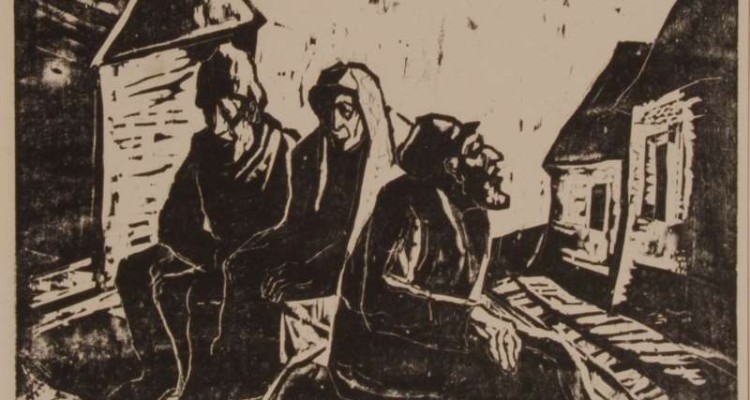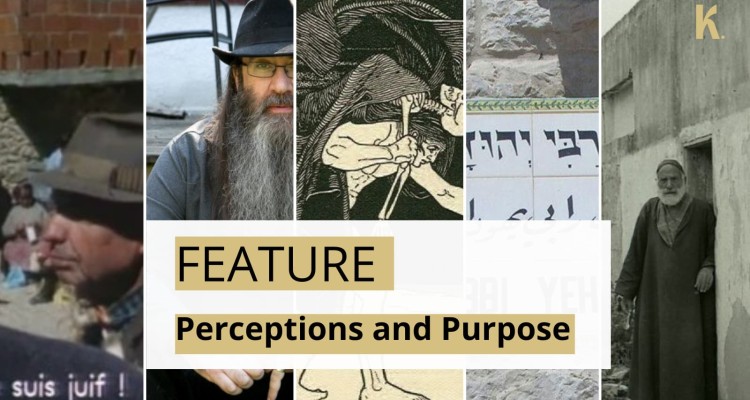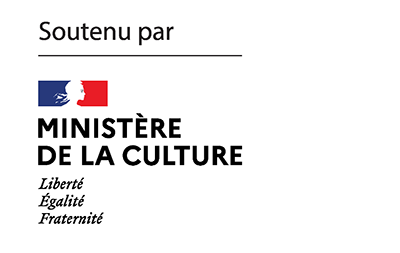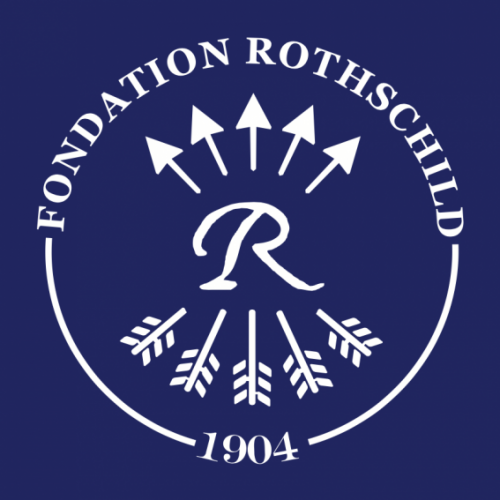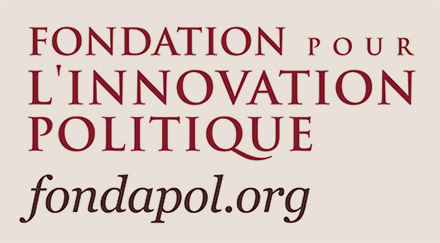October Reflections: Antisemitism, Antizionism and the Jewish Question[1]
The October 7 massacre sent shockwaves through the Jewish world, extending far beyond Israel. One year on, we present David Seymour’s concomitant reflections on the consequences of the massacre for Jews in the Diaspora. What if what was revealed was in fact the permanence, in new clothes, of the “Jewish Question”?

This essay tries to make some sense of the aftermath of the events of 7 October in which approximately 1200 Israeli and non-Israelis citizens were raped, tortured, kidnapped and slaughtered by the terror group Hamas. The aftermath I am referring to is the almost immediate reaction around the globe which coalesced around the singular issue of Israel’s response (or to be exact, prior to Israel’s response) to the events of 7 October rather than to the events themselves; It was a response that unified disparate groups and supplanted virtually every other political and social issue; there was near universal singularity of slogans and the sheer numbers involved which were claimed never to have been seen before in cities all around the world. My argument is that we can try and make sense of this aftermath through three interrelated thoughts. The first is an understanding of the irrationality of the Jewish question as the doppelgänger or ‘evil twin’ of the rationality of Jewish emancipation. The second is the idea that antizionism has come to supplant, or, at the least is coming to supplant antisemitism as the latest iteration of this so-called ‘question’; and the third is the combined effect of these two ideas on the meaning of Jewish emancipation today. I conclude these discussions by noting that the nature of the global responses to the events of 7 October illustrates that the quest for meaningful Jewish emancipation with the corresponding overcoming of the Jewish question remains a work in progress.
In what follows, I begin with a brief discussion of the meaning of doppelgänger that underpins much of this essay. Drawing on the work of Robert Fine and Phillip Spencer, the following section presents the meaning of the Jewish question and illustrate the ways in which antizionism is coming to replace, or subsume, that question’s previous appearance as antisemitism. By way of a ‘case-study’ I reflect on the ‘double-meaning’ of the maxim, Never Again. Before concluding, I turn to the sense of the fragility of Jewish emancipation in the face of the current ascendancy of the Jewish question felt by many diasporic Jews in the weeks following 7 October.
The Jewish Question as ‘Doppelganger’
The idea that we can explain recent upsurges of antisemitism and antizionism through the metaphor of a doppelgänger (an ‘evil double’ or ‘evil twin) of the liberal body politic in which most of us in Europe and North America live, came to mind over the past few years. These years have witnessed what is euphemistically referred to as an ‘uptick’ of antisemitism as evidenced through the ‘antisemitism crisis’ in Jeremy Corbyn’s Labour Party, Charlottesville, the Tree of Life synagogue murders, along with its attachment to arguments relating to Brexit and anti-Jewish myth attaching to COVID. When thinking about these events, I was also struck by the sheer speed in which antisemitic and antizionist conspiracy myths replaced rational explanations and rational debate.
The more I thought about these things, the more I became dissatisfied with current ways of explaining this ‘uptick’. It seemed to me that whether antisemitism is framed in terms of ‘the longest hatred’[2], as a ‘virus’, or as a ‘reservoir’[3], many of the explanations seemed to beg the question; why was recourse to antisemitism and antizionism even imaginable in the first place? Why, when confronted with a range of issues and problems (some completely unrelated to Jews), did antisemitism and antizionism, in a blink of an eye, become an unreflective ‘go to’ response in the first place? Thinking through this question led to other questions.[4] Most problematic of these other questions was a more fundamental question; from where did this seemingly easy to hand, anti-Jewish nonsense come from? Again, the accounts just mentioned fell short. Each of them in their own way tended to locate this origin outside or beyond the mundane social world of everyday life rather than seeing it as a problem created ever anew deep from deep within the heart of that mundane social world. The concept of doppelgänger seemed to answer these questions.
As the world’s ‘evil twin’, the Jewish question reorders that world. It does so by placing ‘the Jew’ or ‘the Jews’ at its centre and reorganises everything else around them.
A doppelgänger is an identical double of the thing with which it shares an exact appearance but with one significant exception, it is ‘evil’. It is this characteristic that makes it a tormenting ‘evil twin’. According to legend, its manifestation has been ‘understood as warnings and harbingers’. As Naomi Klein observes:
‘When reality starts doubling, refracting off itself. it often means that something important is being ignored or denied – a part of ourselves and our world we do not want to see – and that further danger awaits if the warning is not heeded. This applies to the individual but also to entire societies that are divided, doubled, or partitioned into various warring, seemingly unknowable camps. Societies like ours’.[5]
In its concurrent iterations of antisemitism and antizionism, the Jewish question is the doppelgänger of the modern world. Sharing its appearance and, as we will see, its origins within the modern world, or rather, appearing as the modern world, it is ‘evil’. Its evil manifests itself in reducing all that happens in the world along with all explanations of those happenings, to a single malevolent force; ‘the Jews’ and ‘Zionism’. The danger and warning it announces, therefore, is aimed as much against the rational world it doubles as it is against ‘the Jews’ and ‘the Zionists’ themselves. Put simply, as doppelgänger, the Jewish question is the modern rational world’s absolute and total (and totalising), irrational ‘other’.
It is this quality as doppelgänger that explains not only the speed with which antisemitism and antizionism makes its appearance at any given moment, but also the bizarre fact that there is not one aspect of contemporary life – from national and international politics to the most minute of cultural phenomena – that does not have a double to be found through the prism of the Jewish question (here one need only think of the myth of ‘Israel Lobby’ that is said to determine anything from US foreign policy to what hotel room Roger Waters gets to book in Argentina). As the world’s ‘evil twin’, the Jewish question reorders that world. It does so by placing the ‘Jew’ or ‘the Jews’ at its centre and reorganises everything else around them.
Antisemitism, Antizionism and The Jewish Question
It is for these reasons that I turned to Robert Fine and Philip Spencer’s 2017 work, Antisemitism and the Left: A Return of the Jewish Question.[6] One of the central themes of that work is the idea that the emergence of the Jewish question emerged at the end of the 18th Century as a negative response to the movement for Jewish emancipation. For present purposes, this so-called ‘Jewish question’ asked not only should Jews be emancipated into the national societies among which they lived, but also, on what conditions? More often than not, the answer to these two questions blurred into one. Jewish emancipation could not and should not be granted to Jews, because there was ‘something about them’ that would not only be an obstacle to their inclusion, but, more than that, they would and could only pose a threat and a harm to the society into which they were to be emancipated. These alleged Jewish deficiencies and their presumed causes developed over time. They moved from an early emphasis on absence of morality brought about by their centuries of exclusion from the political and social Christian world and/or (more harshly) from their adherence to a religion that was said to be at its heart, ‘unethical’, to that of the crystallising and freezing of these negative characteristics through recourse to the pseudoscience nonsense of ‘race’. It is in this latter context that the Shoah, the obsessive attempt to exterminate each and every Jew captured under the Jewish question’s notion of ‘the Jew’, was articulated by its perpetrators as ‘the final solution to the Jewish question’.
The irony of the decades immediately following the Shoah was that it seemed as if its designation as the final solution to the Jewish question was accepted by all concerned. There is no doubt that in the wake of the extermination, antisemitism did fall into disrepute. By and large, antisemitism in any meaningful sense disappeared from the scene both as a legitimate way of ‘understanding’ the world and as a way of organising populations or large sections of them.
However, what the past years and especially the aftermath of 7 October has shown is that there has been a confusion between the demise of antisemitism and the demise of the Jewish question. In other words, there is an erroneous belief that the articulation of the Jewish question in the form of antisemitism had exhausted the Jewish question itself. It is this assumption that needs to be challenged in wake of the last few weeks. Rather, it is less a case of the demise or exhaustion of the Jewish question through the demise and exhaustion of antisemitism, than it is the new articulation of the Jewish question that simultaneously subsumes and replaces antisemitism – antizionism.
This move from antisemitism to antizionism within the contours of the Jewish question and the replacement of one with the other is implicit within Fine and Spencer’s work but is not fully developed. In the chapter titled, ‘The Return of the Jewish Question and the Double Life of Israel’, they observe:
The most significant expression of the reconfiguring of the Jewish question in the present period lies in the negative presentations of Israel and Zionism. While the stigmatisation of the idea of a Jewish nation can be traced back to the Enlightenment credo that everything should be granted to Jews ‘as individuals’ and nothing to Jews ‘as a nation’, it frames the Jewish question in ways that could not have existed prior to the actual rise of Zionism as a political movement and especially prior to the formation of the state of Israel and the Holocaust.[7]
There has been a confusion between the demise of antisemitism and the demise of the Jewish question. In other words, there is an erroneous belief that the articulation of the Jewish question in the form of antisemitism had exhausted the Jewish question itself.
It is this ‘reconfiguration’ of the Jewish question that is represented through its more recent iteration of antizionism. (As used in this essay, the meaning of ‘antizionism’ is best encapsulated by Isabella Tabarovsky[8], ‘Just like antisemites do battle against a fantasy of ‘the Jews’ that exists in their own hearts, the new antizionism battle a ‘Zionism’ that exists nowhere on earth and is instead conjured up by their own fevered imaginations’.[9]
This reconfiguration is both the consequence of antizionism’s continuity and discontinuity with the Jewish question’s previous iteration as antisemitism.<footnote>Seymour, 2019</footnote> From the perspective of continuity is the ongoing connection between the Jewish question and Jewish emancipation; while its discontinuity relates to the specific nature of the emancipation in question. If antisemitism emerged in relation and reaction to Jewish emancipation within the nation-state, antizionism is in relation and reaction to Jewish emancipation through the nation-state (the state of Israel); a situation that, as Fine and Spencer note is of relatively recent provenance.
In an apt phrase that echoes the concept of doppelgänger, ‘the double life of Israel’, the chapter indicates the ways in which the actually-existing state of Israel is represented through the antizionist lens of the Jewish question.[10] They show how the mundane contradictions present in almost all the world’s nation-states are flattened out through viewing the state of Israel ‘as [the] symbolic [representation] of all that is illegitimate in the present day international community’.[11] They cite three predominant illustrations; the general contradiction and conflict between universal claims of citizenship and the particularity of nationality along with the social and political discrimination that attaches to such contradictions, that in the case of Israel are reduced and re-presented as apartheid. Similarly, and this point is even more relevant in the aftermath of 7 October, Israel’s past and present military conflict with Hamas is presented as genocide. And, thirdly, Israel’s occasional rhetoric against Iran along with its nuclear capability, indeed, if not Israel’s existence per se, stands as a ‘unique threat to world peace’.
Of course, what needs to be noted in the present context is that by framing Israel’s real and imagined crimes and misdemeanours, crimes and misdemeanours of which no state is immune,‘the markers of the old Jewish question are not absent in the new’;[12] that is, the old idea present in the antisemitism of the Jewish question of ‘the Jews’ as separate from and inherently harmful to the nation-state in which they lived is reproduced and reformulated in that question’s new iteration of antizionism. Here it places ‘the Jews’, in this case, the ‘Jewish state’ not only outside the global community, but also, as an inherently harmful threat to ‘humanity’. Perhaps the best illustration of this phenomenon is the number of resolutions passed against Israel in various UN bodies which, at the same time, are relatively silent about the crimes and misdemeanours of other states whose actions may be breaches of the triad of offences just mentioned. This is not to say, of course, that Israel’s actions are either not illegal nor beyond criticism, but, rather, that the matters complained of are, because of its capture through the lens of antizionism, prejudged or essentialised.
This last point, leads to an observation that has also become more apparent after 7 October, although was not absent before this time.The representation of the state of Israel through the antizionist prism of the Jewish question is both deeper and wider than the three examples Fine and Spencer provide.
If antisemitism emerged in relation and reaction to Jewish emancipation within the nation-state, antizionism is in relation and reaction to Jewish emancipation through the nation-state (the state of Israel).
Here, we can only note or list some of the most overt examples that have come to the surface over the last few weeks. These examples include the themes of vengeance (which can be traced back to bad faith readings of the Old Testament), bloodlust or blood thirstiness present in the blood libel and the alleged Jewish (ritual) obsession for the slaughter of non-Jewish children.[13] Finally, in this category, is the revival of the notion that antisemitism, and now antizionism, is a ‘legitimate’ response to inhumane actions of the state of Israel and its ‘apologists’ (a euphemism for ‘the Jews’ and/or the ‘Zionists’ who, until a few weeks ago, were known as in equally euphemistic terms as an equally reductive ‘pro-Israel supporters’).
Of course, none of these examples is itself new or novel, but rather they all have come to be subsumed or, rather, repurposed in the Jewish question’s latest iteration as antizionism. However, new additions are not lacking, even if they are again novel reworkings of sentiments expressed within previous incarnations of the Jewish question. Here, we can note two of the most overt that have come to the fore over recent weeks.
The first, again with antecedents in the previous incarnation of the Jewish question as antisemitism, is the idea that not only Israel as a state, but ‘Zionism’ itself, is illegitimate not just for what it does, or is alleged to have done, but because of Israel’s very existence. The clearest illustration of this point is the relatively new, but erroneous, application to both Zionism and Israel of the concept of ‘settler colonialism’. As with the illustrations discussed by Fine and Spencer, this latest allegation, in keeping within the contours and content of the Jewish question, implies Israel’s breach of the normative values of the global order. This contemporary notion of ‘settler colonialism’ correspondingly implies the Jewish state’s inherent and innate illegitimacy ab initio.
However, it is the second example that is most pertinent in the present context; that of the dualism of meanings attached to the post-Shoah maxim, ‘Never Again’.
The Doppelgänger of ‘Never Again’.
The competing interpretations of the maxim, Never Again, encapsulate almost perfectly the idea of the Jewish question as the doppelgänger of Jewish emancipation, and of Jewish exclusion and inclusion respectively.
On the one side, Never Again can mean, from the perspective of inclusion and emancipation, a maxim of applicability to all, including, of course, Jews, including those murdered on 7 October.
However, from the perspective of the exclusionary nature of the Jewish question, the phrase manifests itself in the accusation that, from the mouths of ‘Zionists’, Never Again, is alleged to mean, ‘Never Again……..to Jews’. It becomes emblematic of Jewish anti-universalistic particularism that contains an implicit lack of legal and moral standards or boundaries.[14] If, as it is believed, ‘Never Again……..to Jews’ means never again the Shoah, the greatest disaster ever to befall Jews, then correspondingly, it appears to give Jews, or, rather, Zionists, carte blanche to ensure it really does never happen again.
Understood in these terms, this antizionist interpretation of Never Again connects not only with the notion that Israel is carrying out a genocide, as discussed above, but also with another recent addition to the armoury of the Jewish question; that of Holocaust inversion.[15] Holocaust inversion, as we know, points to the idea that ‘the Zionists’ are the ‘new Nazis’ and what the Nazis did to Jews yesterday, ’the Zionists’ are doing to the Palestinians today. Nowhere are these points more in evidence than by a small group of Holocaust and antisemitism scholars who, in a letter published in the New York Review of Books on 20th November, write that ‘invoking comparisons to Nazi Germany,
[Does] indeed bring to mind echoes of historical mass violence. But those resonances should serve as an injunction against wide-scale killing, not a call to extend it.[16]
However, regardless of the correctness of not of referencing the Shoah to the events of 7 October, the allegation is not just that adopting the phrase Never Again in the present context is misplaced, but rather, is the bad faith allegation of its intentional ‘weaponisation’ as a call to genocide.
The Jewish Question, Antizionism and the Fate of Jewish Emancipation
One of the most notable occurrences in the weeks since 7 October is the sense of shock, if not trauma experienced by many diaspora Jews at suddenly and unexpectedly finding themselves alone and isolated among those with whom they previously felt a sense of belonging and security. Perhaps nowhere else has this experience been felt than in the USA, a country in which a feeling of Jewish belonging and security has never been tested to the extent it has in Europe. More often than not, this experience emerged not only when the hitherto expected expressions of solidarity and sympathy for the horrors experienced by Israelis were noticeable for their absence, but also by the denials that such horrors were perpetrated in the first place. Compounding these experiences of exclusion and isolation was the implied stripping away, against their will, of the composite aspects of their social identity to that of a unidimensional singularity of ‘Jews’, most notably in their real or purported relationship to ‘Zionism’ and ‘Israel’; a singularity, moreover, that had been externally, one could even say, violently, imposed upon them by others. (An imposition that is not lacking entirely in its application to antizionist Jews, be they orthodox (i.e. Neturei Karta) or liberal).
It seems to me that this sense of shock many experienced in the wake of 7 October can be understood not only as a sudden and unexpected realisation of the fragility of Jewish emancipation and the sudden and unexpected realisation of the resilience of the Jewish question, but also the sheer speed with which, in a blink of an eye, inclusion turned into exclusion and previous political and social divisions became eroded and reorganised around the figure of ‘the Jew’ and/or ‘the Zionists’; a realisation, in other words, of the doppelgänger of Jewish question and Jewish emancipation.
Conclusion
If it is the case that the brutal attacks on 7 October unexpectedly and violently exposed the vulnerabilities of the state of Israel, they also exposed an equally unexpected, if not so violent, appearance of the antizionist iteration of the Jewish question, the vulnerability of Jewish emancipation in the diaspora and in Israel. However, what the recent weeks after 7 October have also shown is that, while the vulnerability of Israel could be overcome by a true and meaningful peace agreement with the Palestinians, the quest for true and meaningful Jewish emancipation and the overcoming of the Jewish question elsewhere may not be so easily resolved.
David Seymour
David Seymour is Senior Lecturer in Law at City Law School; City, University of London. His work focuses on critical theory, Holocaust memory, the ‘Jewish Question’, antisemitism and antizionism. He has also written on Law and Film, Law and Music, Brexit and Covid.
Thank you to David Seymour, David Hirsh and Routledge for giving us the rights to publish this chapter from the newly published book Responses to 7 October: Antisemitic Discourse.
Notes
| 1 | This essay is based on the text of a presentation given to the London Centre for Contemporary Antisemitism on 29th November 2023. Thanks to Alison Diduck, Karin Stoegner, Philips Spencer, Tami Paterson and Rosa Freedman for their comments on earlier drafts. |
| 2 | Wistrich, R.S (1994) Antisemitism: The Longest Hatred. New York, Schocken Books |
| 3 | Gidley, McGeever and Feldman (2020) ‘Labour and Antisemitism: a Crisis Misunderstood’, Political Quarterly, 91(2), pp.413-421 |
| 4 | Seymour, D, (2023) ‘Reflections on the Reservoir: The Abstraction of Antisemitism, Journal of Contemporary Antisemitism, 6(1), pp.49-62 |
| 5 | Klein, N, (2023) Doppelganger: A Trip Into the Mirror World, London Allen Lane, p.9 |
| 6 | Fine, R and Spencer, P, (2017) Antisemitism and the Left:On the return of the Jewish question, Manchester, Manchester University Press |
| 7 | ibid. p.111 |
| 8 | Tabarovsky, I, (2023) ’The Cult of Antizionism’, Tablet, 20, September, https://www.tabletmag.com/sections/arts-letters/articles/cult-of-antizionism-icsz |
| 9 | see also, Hirsh, D (2023). ‘Contemporary Antisemitism’, The Routledge History of Antisemitism, London, Routledge; Seymour, D. (2019) ‘Continuity and Discontinuity: From Antisemitism to Antizionism and the Reconfiguration of the Jewish Question’, Journal of Contemporary Antisemitism, 2(2) pp. 11-23 |
| 10 | Fine and Spencer, supra note vii pp.111-129 |
| 11 | ibid. p.116 |
| 12 | ibid. p. 123 |
| 13 | On the history of the ‘blood libel’, see, Teter, M, (2020), Blood Libel: On the Trail of an Antisemitic Myth, Boston, Harvard University Press |
| 14 | Seymour, D. (2016), ‘Holocaust Memory: Between Universal and Particular’ in Seymour, D.M. and Camino, M. (eds) The Holocaust in the twenty-first century: Contesting/contested Memories, London, Routledge; Seymour, D. (2010) ‘From Auschwitz to Jerusalem to Gaza: Ethics of the Want of Law’, Journal of Global Ethics 6(2), 205-2015 |
| 15 | Klaff, L. (2014) Holocaust Inversion and contemporary antisemitism. Fathom, https://fathomjournal.org/holocaust-inversion-and-contemporary-antisemitism/ |
| 16 | Bartov, O et al (2023) ‘An Open Letter on the Misuse of Holocaust Memory, NYRB, 20 November https://www.nybooks.com/online/2023/11/20/an-open-letter-on-the-misuse-of-holocaust-memory/ |
